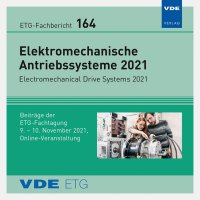Multi-objective Electric Powertrain Design Optimization Under Package Constraints
Konferenz: Elektromechanische Antriebssysteme – Electromechanical Drive Systems 2021 - ETG-Fachtagung
09.11.2021 - 10.11.2021 in Online
Tagungsband: ETG-Fb. 164: Elektromechanische Antriebssysteme 2021
Seiten: 6Sprache: EnglischTyp: PDF
Persönliche VDE-Mitglieder erhalten auf diesen Artikel 10% Rabatt
Autoren:
Filomeno, Giovanni; Krueger, Bastian (Advanced Development Transmission and Powertrain Simulation, BMW-Group, Munich, Germany Industrial and Automotive Drivetrains, Ruhr-University of Bochum, Germany)
Ahmad, Moustafa Alsayed (Concepts Body and Exterior and Architecture, BMW-Group, Munich, Germany & Structural Analysis, TU Munich, Germany)
Wolkerstorfer, Martin (PfeifferControl, Taufkirchen, Germany)
Tenberge, Peter (Industrial and Automotive Drivetrains, Ruhr-University of Bochum, Germany)
Dennin, Dirk (Advanced Development Transmission and Powertrain Simulation, BMW-Group, Munich, Germany)
Inhalt:
The design of automotive electric powertrains, comprising electric motors, gearbox, and power electronics, is confined by an assembly space that depends on the entire automotive system. Therefore, the geometric optimization problem of dimensioning and positioning these components has a large number of design variables. These include positions and rotations, but also mechanical parameters such as transmission ratios or bearing dimensions. In this work, an automated design method is presented, based on a division of the problem into a series of sub-problems: the design of the electrical components, the design of the electric motor, gearbox design, positioning of all components within the assembly space, and the generation of the inverter box. The BMW i3 transmission is used as a test case to validate the method, with a simulated reference construction having similar dimensions compared to the original construction. Moreover, the simulation results demonstrate the potential of automated construction by showing a reduction of 55.6 mm in axial length compared to the reference transmission.


